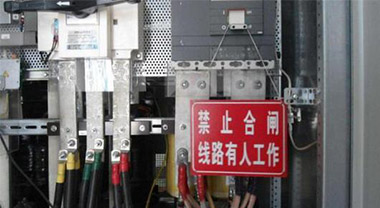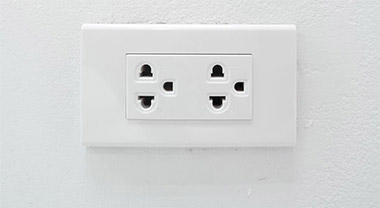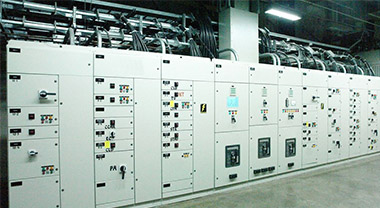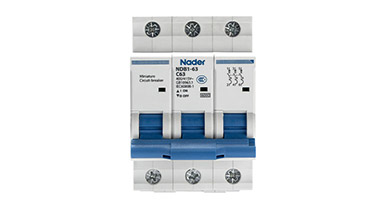Classification of high voltage circuit breakers
High-voltage circuit breakers can cut off or switch on normal working current, or cut off or close short-circuit current. They are important electrical equipment in power systems. It is generally equipped with a special arc extinguishing device to quickly extinguish the arc generated between the moving and static contacts, thereby cutting off the circuit. The circuit breaker is mainly composed of circuit on-off components, insulating support components, base, operating mechanism and its intermediate transmission mechanism. With the continuous advancement of technology, circuit breakers are developing in the direction of high-voltage and large-capacity, self-energy, miniaturization, combination and intelligence.
High-voltage circuit breakers can be divided into oil circuit breakers, compressed air circuit breakers, vacuum circuit breakers, SF6 circuit breakers, etc. according to the arc extinguishing medium used. In the past, most of our country used oil circuit breakers and air circuit breakers. In the past ten years, with the development of oil-free process, vacuum circuit breakers and SF6 circuit breakers have been widely used. The development of excellent performance SF6 circuit breakers and vacuum circuit breakers has become The general trend.
The vacuum circuit breaker installs the contacts in the vacuum arc extinguishing chamber, and uses vacuum as the insulation and arc extinguishing medium between the contacts. The vacuum interrupter is the most important part of the vacuum circuit breaker, which is composed of shell, contact, bellows, shield and other parts. Vacuum circuit breakers have the advantages of excellent performance, simple structure, small maintenance workload, long life, small size, light weight, safety, environmental protection, and suitable for frequent operation. They are widely used in voltage levels such as 10 and 35kV.
SF6 circuit breakers use SF6 gas as insulation and arc extinguishing medium. Because SF6 gas has excellent insulation and arc extinguishing performance, the performance of the circuit breaker has been greatly improved and improved, and it is widely used in high-voltage and ultra-high voltage systems. The arc extinguishing chamber of SF6 circuit breaker has developed from the earliest double voltage type to single voltage type and then to self-energy type. With the development of SF6 circuit breakers to the voltage level of 10 ~ 35kV, in addition to the traditional single voltage arc extinguishing principle, these In the voltage level, a variety of arc extinguishing principles have also appeared, such as rotary arc, hybrid arc extinguishing and so on.
GIS makes standard components such as circuit breakers, isolating switches, grounding switches, three-phase bus bars, current transformers, voltage transformers, lightning arresters, cable heads, insulating sleeves, etc., and is installed in a closed metal shell filled with SF6 gas. Each component can be It can be made into standard independent structures with different connection forms, supplemented by transition elements such as tee, expansion joint, etc., to meet the requirements of different forms of main wiring and form a complete set of power distribution devices. It saves floor space, does not produce noise and radio interference, operates safely and reliably, has a short installation period, a small maintenance workload, and a long overhaul period. Therefore, it develops rapidly and is widely used.
The operating mechanism provides power energy for the circuit breaker to complete the opening and closing. According to the different forms of energy, the operating mechanism can be divided into manual operating mechanism, electromagnetic operating mechanism, electric motor operating mechanism, hydraulic operating mechanism, pneumatic operating mechanism and spring operating mechanism. Among them, hydraulic operating mechanism and spring operating mechanism are the future development trends.
The isolating switch does not have a special arc extinguishing device, which can isolate the voltage and cut the small current, and can cooperate with the circuit breaker to switch the circuit and change the operation mode of the primary system. It is composed of an insulating part, a conductive part, a supporting base or frame, a transmission mechanism and an operating mechanism. In order to ensure the correct operation sequence, there must be an anti-misoperation locking device between the isolating switch and the circuit breaker and the grounding switch.
Circuit breakers and isolating switches are very important switching appliances. Operators should carefully perform operation and maintenance work in accordance with relevant regulations and according to the specific conditions of circuit breakers and isolating switches of different specifications.
According to the arc extinguishing device and the arc extinguishing medium of high voltage circuit breaker, it can be divided into:
- Oil circuit breaker (less oil circuit breaker and more oil circuit breaker);
- Air circuit breaker;
- Magnetic blower circuit breaker;
- Vacuum circuit breaker;
- Sulfur hexafluoride circuit breaker;
According to the nature of the operating mechanism, it can be divided into:
- Electrically operated structure circuit breaker;
- Hydraulically operated structure circuit breaker;
- Pneumatically operated circuit breaker;
- Spring energy storage operating structure circuit breaker;
- Manually operate the structural circuit breaker;
According to the installation location, it can be divided into:
- Indoor circuit breaker;
- Outdoor circuit breaker;
- Explosion-proof circuit breaker;




